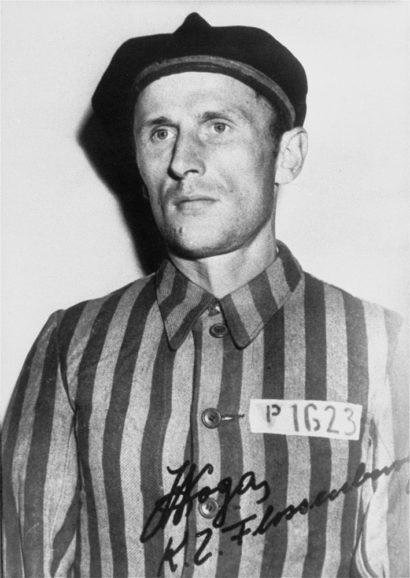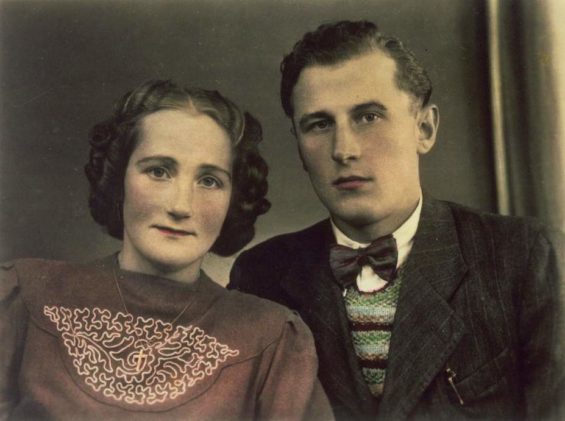Julian Noga
born July 21, 1921
![]()
Julian Noga in prisoner’s uniform shortly after his liberation, April 1945 (United States Holocaust Memorial Museum, Washington D.C.)
Imprisoned in the Camp for Love
Julian Noga lived with his mother in the west Galician city of Tarnów and worked as a baker. After the German invasion of Poland, he was sent to work on a farm near Linz, Austria. He fell in love with Frieda, the farmer’s daughter. Relations between forced laborers and German women were forbidden. In 1941, the couple was denounced. Both were interned in concentration camps, Frieda in Ravensbrück and Julian in Flossenbürg.
Julian Noga first worked in the quarry, then in aircraft production for Messerschmitt. On April 20, 1945, after four years in the camp, the SS herded Noga onto a death march to Dachau. For a while on the march, Noga and several prisoners carried a fellow inmate who was unable to walk. However, the men themselves were barely able to stand, and in the end they were forced to leave their comrade behind. They heard the shots as the SS killed their comrade by the side of the road. On April 23, the US Army liberated Julian Noga near Cham. “I would not have survived another day,” he recalled.
![]()
Julian Noga and his wife Frieda, undated (private collection)
When Noga regained his strength, he returned to Austria by bicycle. There he asked Frieda, who had also survived, to marry him. Frieda and Julian emigrated together to the United States. There Julian Noga built a new life as a stonemason.

